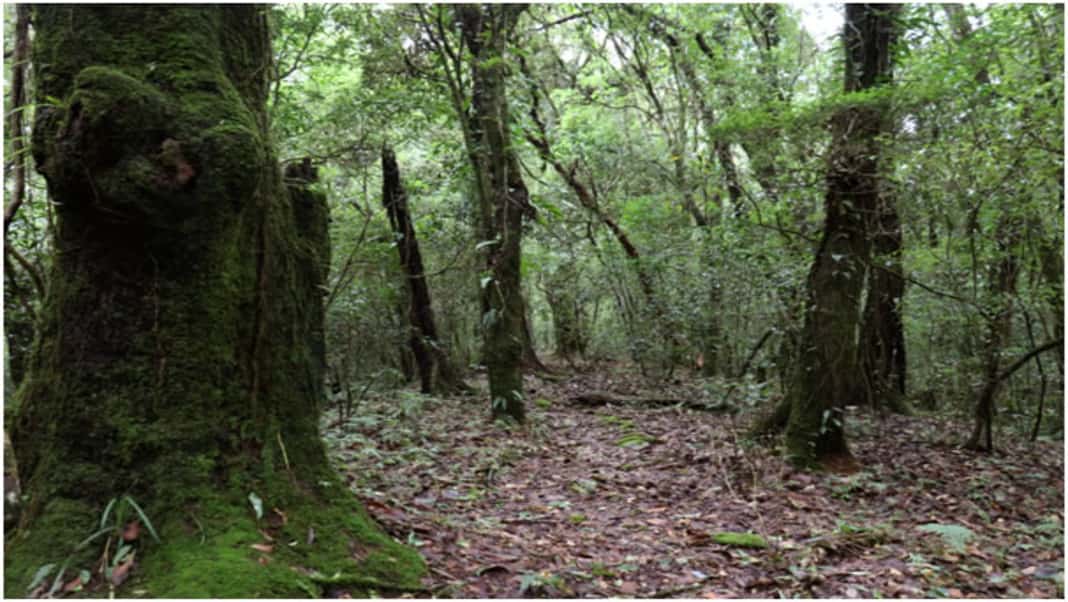Shillong, June 19: Sacred groves which provide several ecosystem services are not yet registered with the concerned autonomous district councils, as mandated by the United Khasi-Jaintia Hills Autonomous District (Management and Control of Forests) Rules, 1960.
The consequence of not registering is they don’t get legal protection from diversion for non-forestry purposes.
The picturesque landscape of Meghalaya is dotted with patches of undisturbed, virgin forests protected by the local tribal communities for centuries for religious and cultural practices. They provide several ecosystem services such as reduction in soil erosion, maintenance of the hydrological cycle, ensuring availability of water free from contamination and natural dispersal of seeds. They also help maintain the health of the ecosystem, reduce habitat destruction and conserve the viable population of pollinators and predators. The value of these undisturbed, virgin forest patches for biodiversity conservation and carbon sequestration has gained increasing attention with the rising impacts of climate change.

Meghalaya forest department has requested the Centre to declare the sacred groves as community reserves and has requested assistance of Rs 24.74 crore for conservation and to enhance the resilience of sacred groves to climate change.
“Notification of these sacred grove areas as a Community Reserve will accord legal recognition and protection. It will also make them eligible to receive financial assistance under a Centrally Sponsored Scheme of ‘Integrated Development of Wildlife Habitats” a report on Forest Inventory of Sacred Groves in Meghalaya (Volume –III) released today by Meghalaya Chief Minister Conrad Sangma says.

Chief Minister Sangma praised the research efforts, particularly highlighting the contributions of Mr H C Chaudhary PCCF Working Plan, Research and Training. Sangma stressed that research and data-driven decision-making are integral to governance, enabling the formulation of informed policies.
The report says none of the sacred groves, surveyed during the study have been registered with the concerned autonomous district councils, as is mandated by the United Khasi-Jaintia Hills Autonomous District (Management and Control of Forests) Rules, 1960.
“The report recommends registration of these sacred groves under these rules to accord legal recognition and protection from diversion for non-forestry purposes. The boundary of these forests has not been physically demarcated on the ground. This may result in intentional or unintentional encroachments. The publication therefore recommends that the boundary of these groves shall be demarcated with permanent boundary pillars and signages to prevent and to ensure early detection of encroachments. The publication also recommends the promotion of eco-tourism in sacred groves to create awareness about rich biodiversity and also to create livelihood opportunities for local residents.

Section 38C of the Wild Life (Protection) Act, 1972 provides that the State Government may, where the community or an individual has volunteered to conserve wildlife and its habitat, declare any private or community land not comprised within a National Park, Wildlife Sanctuary or a Conservation Reserve, as a Community Reserve, for protecting fauna, flora and traditional or cultural conservation values and practices.

“Notification of these sacred grove areas as a Community Reserve will accord legal recognition and protection. It will also make them eligible to receive financial assistance under a Centrally Sponsored Scheme of ‘Integrated Development of Wildlife Habitats’. The publication therefore recommends notification of sacred groves as Community Reserve” the report says.

To facilitate long-term conservation, protection and scientific management of sacred groves, the Working Plan, Research & Training and District Council Affairs Wing in the Forest and Environment Department through the Forest Resources Survey Division has initiated a survey, mapping and inventory of growing stock in sacred groves in the State. Volume I and Volume II of a Report on Forest Inventory of Sacred Groves of Meghalaya, each containing details of 20 sacred groves, were published in 2017 and 2022 respectively. Volume III of the publication includes details of 24 sacred groves located in the East Khasi Hill district for which a field survey was carried out during 2022-23.
Forest Resources Survey Division has also identified an additional 69 sacred groves located in the Khasi Hills and Jaintia Hills region for mapping and inventory during 2024-25.

Also Watch
Find latest news from every corner of Northeast India at hubnetwork.in, your online source for breaking news, video coverage.
Also, Follow us on-
Twitter-twitter.com/nemediahub
Youtube channel- www.youtube.com/@NortheastMediaHub2020
Instagram- www.instagram.com/ne_media_hub





